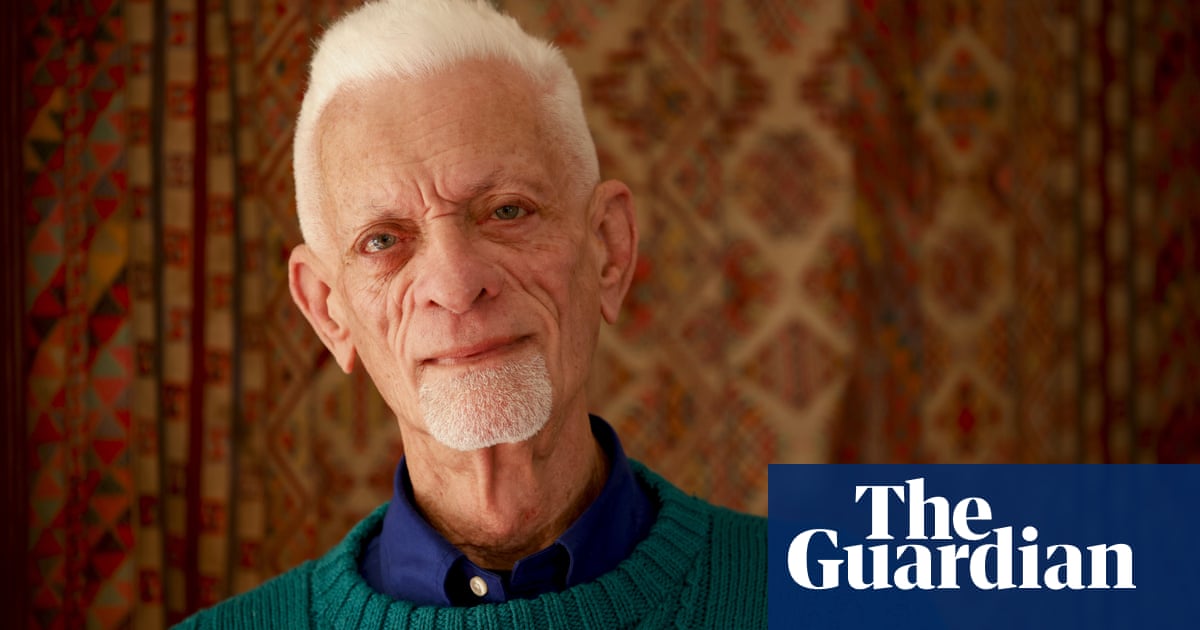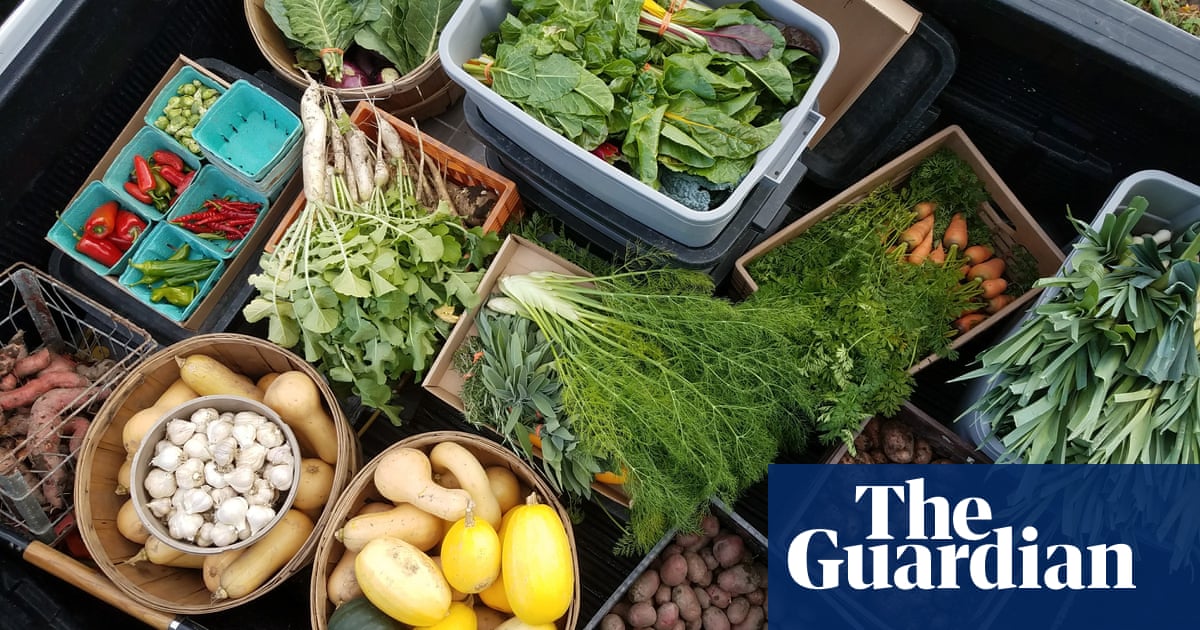
t’s a Tuesday morning in late April. I drive under a green canopy of live oaks on Hilton Head Island, South Carolina. Hilton Head is the picture of prosperity, awash in artificial green golf courses, pollen and Disney resorts – but I’m searching for a food pantry.
A small private plane flies overhead. More than 70% of Hilton Head’s current homeowners live in gated communities, which are often named after cotton plantations that enslaved thousands of people. Early developer Charles Fraser built the island’s iconic red-and-white striped lighthouse; the structure hosts weddings and overlooks not just the harbor, but the final hole of a golf course.
Finally, the shopping centers give way to larger oaks and older churches. This part of the island is known as Mitchelville, an old Gullah Geechee settlement where descendants of formerly enslaved people still live. I pull my car into the parking lot and I am soon swept up into preparations for the Sandalwood Food Pantry.
“Welcome,” a woman says to me. “Can you bring the bins of toilet paper outside?”
“Sure,” I say.
There’s nothing downtrodden about the place. It has the pulse of an open-air market: shelves of fresh bread, cereals, toiletries, meat, eggs, milk and fresh produce. Clients mingle with volunteers – laughing, catching up about work, kids and health.
This palpable safety and joy is highly intentional – the result of 13 years of work by Dr Nanette Pierson, who moved to Hilton Head in 2009. She noticed hungry children at a local apartment complex, and began feeding a few local families with her retirement funds.
Now, she feeds more than 950.
Pierson was diagnosed with cancer when she first moved to South Carolina. “But every day I put on my wig,” she tells me, “and I showed up.” She has served meals outside every week of the pandemic. “At times, it’s unbearable,” she says. Any given week Pierson and her crew might face extreme heat, rain, and the increased suffering of the pantry’s clients. Pierson quickly assigns me to a table where I’ll hand out toiletries.
Why are there so many people lining up to eat, in such a visibly prosperous place?
It’s a complicated answer, one that involves the forces of systemic racism. The pandemic has also exacerbated the situation. A Guardian/IPR investigation last month showed how as many as one in four people have been at risk of food insecurity in the US nationally, with people of color suffering most.
Many of Sandalwood’s clients are Gullah Geeche. When the Union army occupied the island, formerly enslaved people moved to Hilton Head in large numbers, finally allowed to purchase land and attend school. Recent estimates suggest Gullah Geechee used to own over 90% of land in the area, yet only 10% remains in their hands today. A farming and subsistence lifestyle is no longer possible due to development and contaminated soils.
This part of the island is also considered a food desert. There is no grocery store within 15 miles – and many don’t have a car or the spare cash to stock emergency supplies.
Al George, himself a descendant of the Gullah Geechee, serves as the Charleston Aquarium’s first director of conservation. He tells me that families here have been under siege for a long time. “They’ve been turned into a disposable labor force that supports the hospitality industry on the island. If you’re making $7 an hour, you end up living a life that isn’t that different from people who were doing the same a hundred years ago.”
Behind a resort community are its workers – often invisible, underpaid and in need of affordable housing and food. But Covid slowed tourist traffic, and many of those already living below the poverty line lost their low-paying hospitality jobs. The Sandalwood Food Pantry became a lifeline. Pierson now not only feeds her clients, but fights pandemic misinformation and pays cab fares for anyone willing to get vaccinated.
“My clients know about good health,” Pierson clarifies. “They know so much more than people give them credit for. But they lack trust in the system, the relational aspect of it.”
“I had a person tell me, ‘Al, they don’t care about us. We almost feel like they want us gone,’” George says. “That’s dark. I’m trying to hold on to some semblance of positivity. And I hate to say it, but after five and a half years of doing this work, I think they might be right.”
t’s hard to be in this evangelical part of the Lowcountry and not talk about white savior complexes but from the ground, the Sandalwood Food Pantry acts like a collaborative, community-led movement. Many former clients now work in the pantry. Others split their food shares with those unable to leave home for food. Pierson is white, but has been a part of the Mitchelville community for so long that her constituents made her an elder in the church. She tells me she has been marrying and burying people throughout the pandemic.
Wesley, a farmer who grows the produce for the pantry, just buried relatives and lost part of his farmland to the government, but he has shown up today with piles of glistening collards to share. Wesley tells me that the community is behind Pierson and plans for a new shelter. “We need this,” he says.
Pierson is fiercely protective over the pantry’s clients, turning away researchers or government employees who simply want to run another survey or test on her community. She uses her own money to haul trees off of her clients’ trailers after storms, saves iron-rich cuts of meat for anemic patients and makes sure people are on their medications.
“The people I serve are wise people,” Pierson tells me. “They know the land better than most of the engineers and land managers, but they aren’t given a seat at the table. They recycle. The people I serve do the least damage to the environment and suffer the greatest. We have a vegan and vegetarian section. I use local farmers. We do a fresh fish program. People look at us and think, - ‘Oh, poor them.’ Alright! I think we’re healthy in body, mind and spirit.”
The Gullah Geechee are not just culturally vulnerable – losing jobs, elders, language and land year over year. Their property is under assault not just from developers, but by hurricanes made stronger by climate change. Because of the heirs’ rights system in which much of Gullah Geechee property is passed down without a formal will, they’re often unable to qualify for Federal Emergency Management Agency (Fema) assistance after big storms. Research shows that in South Carolina, counties with a high prevalence of heirs’ rights, Fema denied more than 40% of applications for relief funds after Hurricane Matthew, many denials citing the lack of proof in property ownership.
“The land is it,” George explains. “Their one worldly possession. Their history. Their connection to their past. Their connection to their family, and the perfect storm has occurred. It’s not just about the Gullah Geechee losing land. It’s about gentrification and institutional racism.”
When hurricanes pummel the island, many Gullah Geechee don’t have the resources to evacuate, and are left to weather deadly conditions while members of gated communities and country clubs leave the island.
“Hurricane Matthew hit us as a category 2,” George tells me. “The island was shut down for two weeks.
“If you’re a person of means, you can complain about things being shut down, you can pick up and go someplace. If you’re living in a trailer, you don’t have a car, and your primary food comes from a pantry – what happens if an island is shut down for two weeks and you don’t have the means to go anyplace? Can you imagine being without lights or water for over a week and have nowhere you can go to get food?”
George and Pierson want to help their community prepare for future storms sure to come this season and beyond. They’ve designed an “amphibious” resilience shelter made from shipping container material that will stock critical food and supplies. So far, securing land and buy-in from the local government has been harder than they thought. They were offered a toxic dump site to start with, but turned it down.
“I never thought that we’d be here,” Pierson tells me, “about to build the first amphibious resilience food pantry. But it’s critical to me that the people I serve are safe – by choice, and not chance.”
George is frustrated that there isn’t more legal and financial help available. “There should never be a situation where someone like me – operating out of a shoebox – can do more than Fema, or the Army Corps of Engineers, or foundations sitting on millions of dollars,” George says. “Why am I more of an asset than these better resourced organizations who have the mission to do this sort of work?
“How long do you let this persist as a clear issue?” George asks. “How can you have people – with the most history in this part of the world – not eligible for this support? These people are as American as you can get. They are incredible people who have navigated 400 years of awful conditions in America. It’s a testament to them that they have a will to stay true to their homes, families and values. But the things that make them different make them targets. We’ve got to allow people to be whole.”
That morning, I hand toilet paper to people on crutches and in neck braces. I watch George carry bags for the elderly as they shop. Pierson comforts a crying girl with a new doll, hands someone a gently-used bike, and asks a man with schizophrenia where he’ll store his perishable items.
“When I see the people that I love,” she tells me, “sometimes they are really suffering. Sometimes people, like things, have to be restored. But never thrown out. There are no throwaways. The human beings I serve are already so resilient.” Pierson tells me she can make a dime from a nickel. “You can give us just a little,” she says, “and we’ll do the best we can possibly do.”












